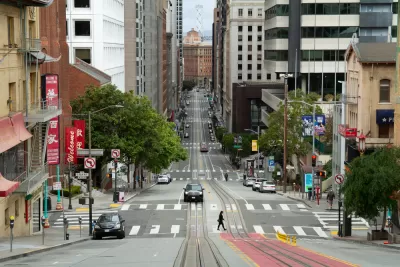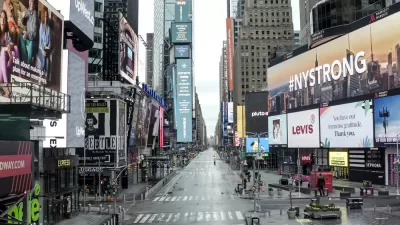An argument for the long-term cultural and economic viability of the city, even after the pandemic.

Highly productive workers and industries will continue to cluster in cities, and remote work can only go so far in reshaping the global economy, according to one leading economics researcher.
Jerusalem Demsas writes in the article and interview linked below on one of the most common questions of the pandemic: Will workers return to the city, or will huge number of former office workers and urban dwellers decamp for good to the suburbs, where they'll work from home for the rest of their careers?
"Much ink has been spilled on how Covid-19 will impact the urban geography of the United States," writes Demsas to introduce the context of the argument to come. "Early in the pandemic, some were even forecasting the death of the nation’s superstar cities as some urban dwellers fled for the suburbs."
There were plenty of signs for naysayers of urbanity to point to in predicting the death of cities as a result of the pandemic. "As the year went on, demand for suburban homes fueled questions about whether these moves would be permanent," and "A June National Bureau of Economic Research paper by researchers from the University of Chicago estimated that 37 percent of jobs can be performed entirely remotely."
There are still, however, reasons to believe in the ongoing centrality of large cities in the economy and culture of the United States. To present that case, Demsas interviews with Enricco Moretti, economic professor at the University of California, Berkeley, who authored the 2013 book The New Geography of Jobs.
"In this interview, Moretti explains why high-productivity workers cluster in a handful of cities and why the strength of those forces means it’s unlikely that very many of us will be working fully remotely in the long run. We also discuss why such a small slice of the American labor force can determine so much about which cities dominate," writes Demsas.
FULL STORY: Remote work is overrated. America’s supercities are coming back.

Study: Maui’s Plan to Convert Vacation Rentals to Long-Term Housing Could Cause Nearly $1 Billion Economic Loss
The plan would reduce visitor accommodation by 25,% resulting in 1,900 jobs lost.

North Texas Transit Leaders Tout Benefits of TOD for Growing Region
At a summit focused on transit-oriented development, policymakers discussed how North Texas’ expanded light rail system can serve as a tool for economic growth.

Why Should We Subsidize Public Transportation?
Many public transit agencies face financial stress due to rising costs, declining fare revenue, and declining subsidies. Transit advocates must provide a strong business case for increasing public transit funding.

How to Make US Trains Faster
Changes to boarding platforms and a switch to electric trains could improve U.S. passenger rail service without the added cost of high-speed rail.

Columbia’s Revitalized ‘Loop’ Is a Hub for Local Entrepreneurs
A focus on small businesses is helping a commercial corridor in Columbia, Missouri thrive.

Invasive Insect Threatens Minnesota’s Ash Forests
The Emerald Ash Borer is a rapidly spreading invasive pest threatening Minnesota’s ash trees, and homeowners are encouraged to plant diverse replacement species, avoid moving ash firewood, and monitor for signs of infestation.
Urban Design for Planners 1: Software Tools
This six-course series explores essential urban design concepts using open source software and equips planners with the tools they need to participate fully in the urban design process.
Planning for Universal Design
Learn the tools for implementing Universal Design in planning regulations.
City of Santa Clarita
Ascent Environmental
Institute for Housing and Urban Development Studies (IHS)
City of Grandview
Harvard GSD Executive Education
Toledo-Lucas County Plan Commissions
Salt Lake City
NYU Wagner Graduate School of Public Service




























